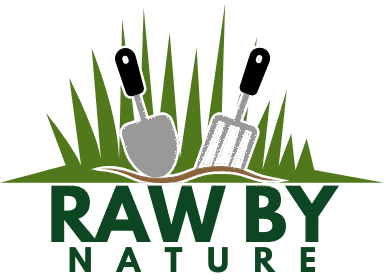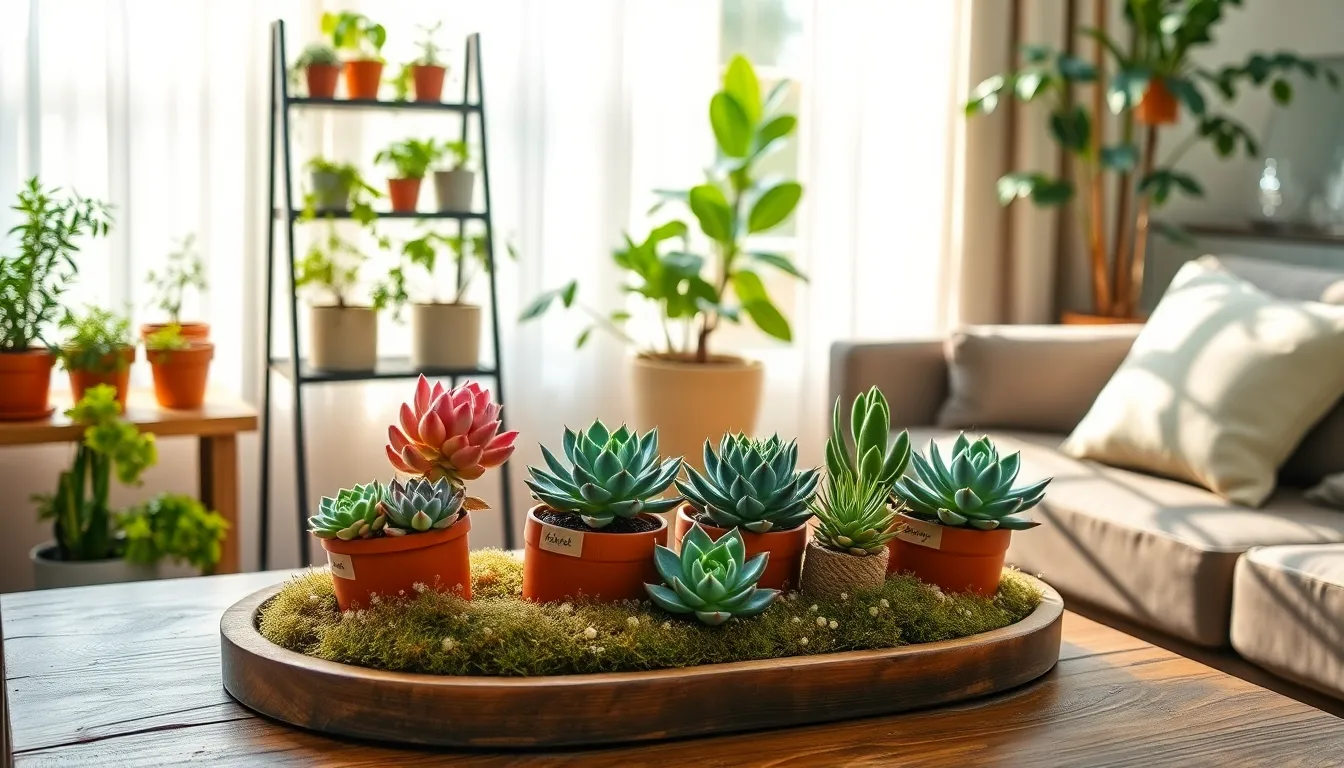Welcome to “Indoor Gardening Tips for Beginners,” where the magic of cultivating your own lush oasis within the comfort of your home awaits you. Whether you’re taking your first step into the world of houseplants or you’re a seasoned gardener seeking to refine your indoor techniques, this guide is designed to inspire and empower you with practical insights and creative ideas.
In this bustling world, indoor gardening offers a serene escape and a chance to reconnect with nature, all while enhancing your living space and purifying the air you breathe. By weaving these simple yet effective tips into your daily routine, you’ll discover the joy of watching your plants thrive and the satisfaction of nurturing life, transforming even the smallest space into a vibrant haven.
Prepare to embark on a rewarding journey that will not only beautify your home but also boost your well-being and productivity. With each page, you’ll gain the confidence to experiment with different plants and techniques, ensuring that your indoor garden flourishes and brings endless delight to your life.
Choose Space-Saving Plant Varieties
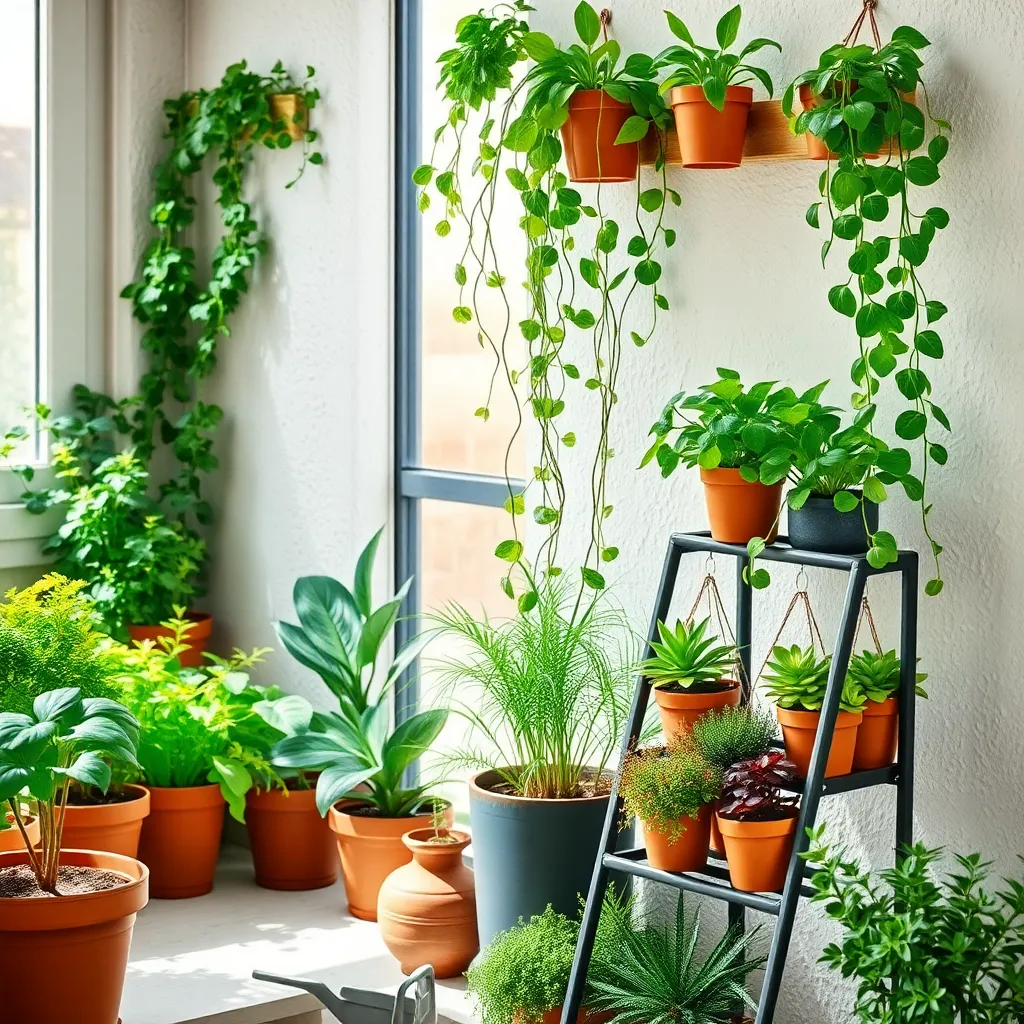
When space is limited, choosing the right plant varieties is essential for successful indoor gardening. Opt for compact, bushy plants or those with vertical growth habits to maximize your available space.
Start with herbs like basil, cilantro, and thyme, which thrive in small pots and require minimal room. These plants not only fit well on windowsills but also need only moderate watering and well-draining potting soil to flourish.
Consider dwarf varieties of vegetables and fruits, such as dwarf tomatoes or strawberries. These plants are specifically bred to thrive in confined spaces while still producing a bountiful harvest with the right care, such as regular feeding and sufficient light.
For those looking to add greenery without taking up too much space, succulents and cacti are excellent choices. They are low-maintenance and require infrequent watering, making them ideal for busy beginners and experienced gardeners alike.
Ensure Adequate Artificial Lighting
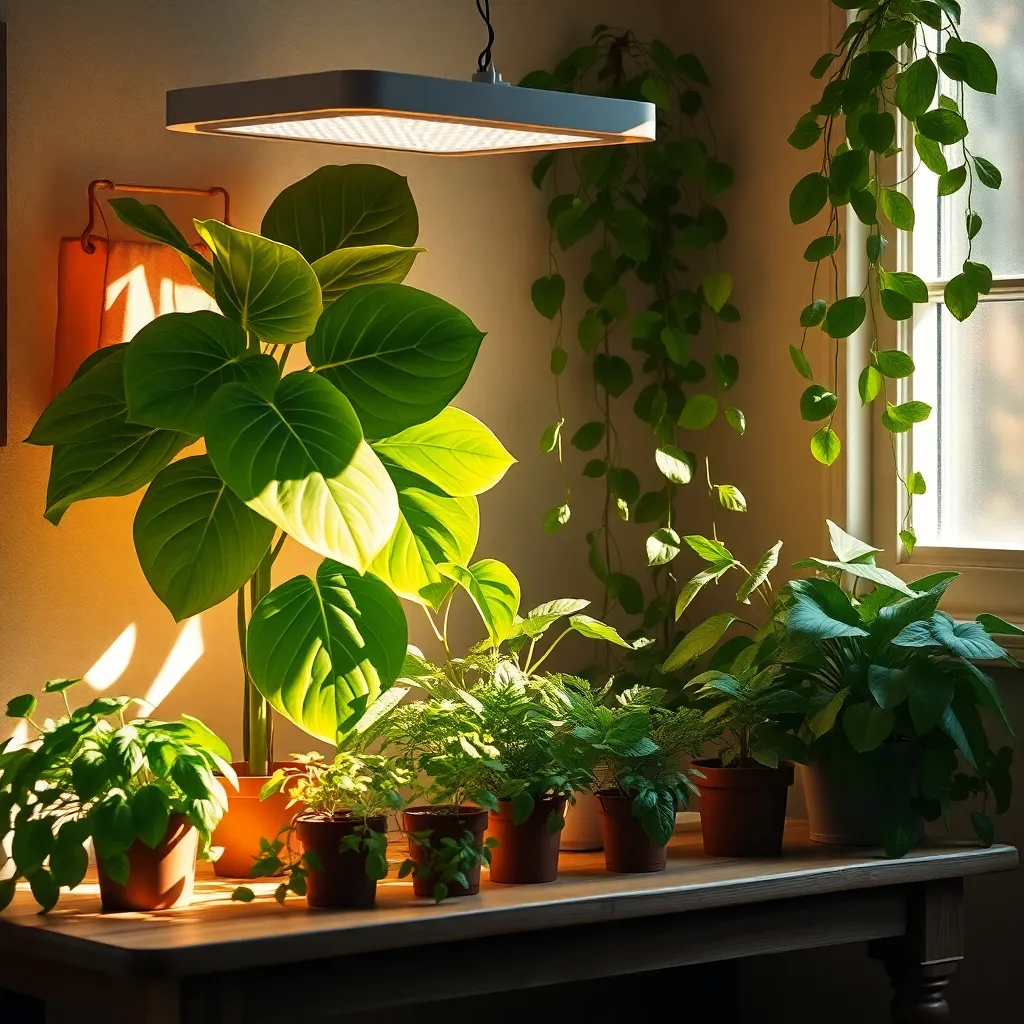
To thrive indoors, plants often need more light than what is available naturally, especially during winter months. Artificial lighting can bridge this gap, ensuring your plants receive the necessary illumination to grow healthy and strong.
When selecting artificial lights, consider the specific needs of your plants. Most indoor plants thrive under full-spectrum LED lights, which mimic natural sunlight and promote balanced growth.
Position the lights approximately 6 to 12 inches above the plants to avoid overheating while ensuring adequate light distribution. Adjust the distance based on your plant’s specific light requirements and growth stage.
For beginners, a simple timer can help automate your lighting schedule, providing consistent light exposure without daily adjustments. Most plants benefit from 12 to 16 hours of artificial light per day, depending on their species and growth phase.
Advanced gardeners might explore using a combination of blue and red lights, which can enhance photosynthesis and flowering. Remember to periodically rotate your plants to ensure even light exposure and prevent leaning towards the light source.
Water Plants According to Needs

Understanding the water needs of your indoor plants is crucial for their healthy growth and development. Different plants have varying moisture requirements, so it’s essential to tailor your watering routine accordingly.
Start by assessing the specific water needs of each plant in your collection. Succulents and cacti, for example, thrive on less frequent watering, typically every two to three weeks, allowing the soil to dry out completely between sessions.
Conversely, tropical plants like ferns and peace lilies prefer consistently moist soil but not waterlogged conditions. To achieve this, water these plants once the top inch of soil feels dry, usually every week or so, depending on your indoor climate.
To ensure accuracy, use a moisture meter or simply insert your finger into the soil up to the second knuckle to check for moisture. Adjust your watering routine during different seasons, as plants typically require less water in the winter months due to slower growth rates.
For advanced care, consider the quality of water you use, as some plants are sensitive to chemicals found in tap water. Collecting rainwater or using distilled water can be a beneficial practice for plants like orchids and African violets.
Use Quality Indoor Potting Soil
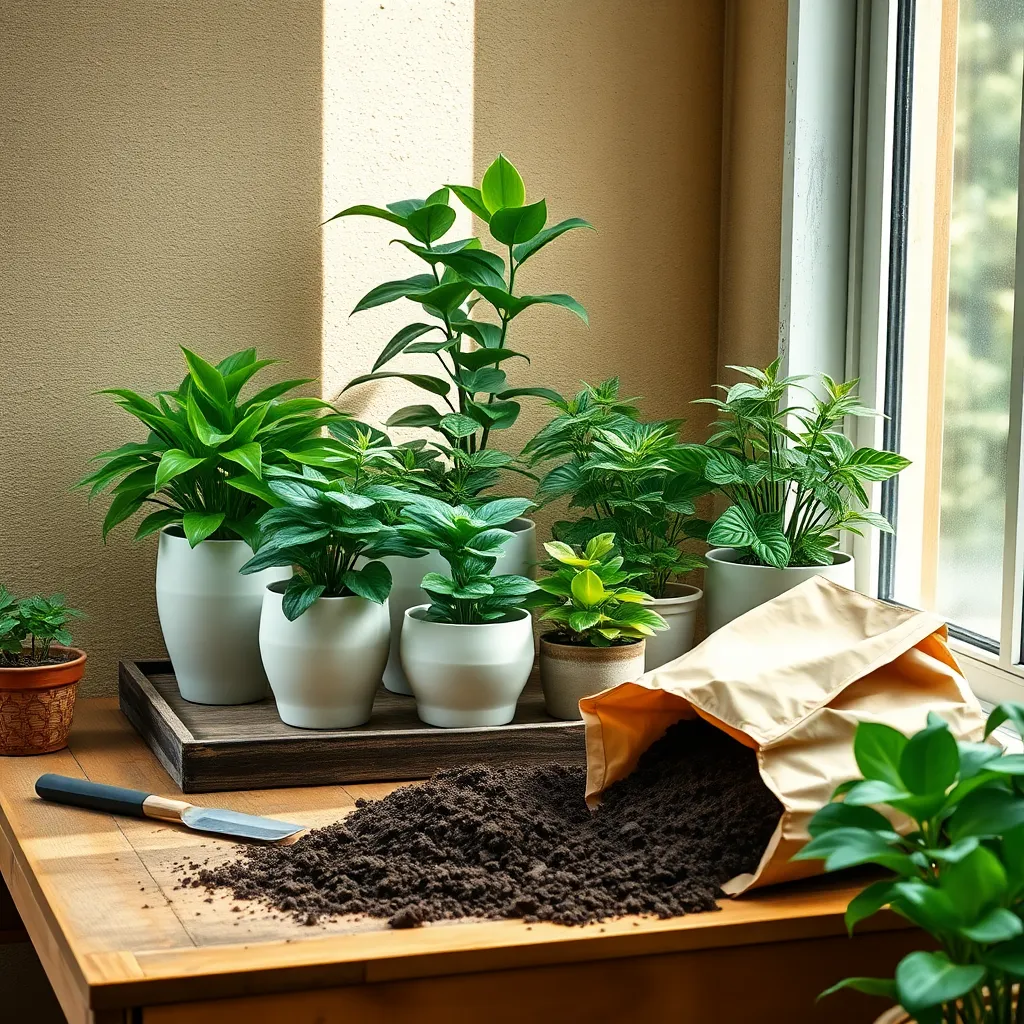
Choosing the right soil is crucial for indoor gardening success. Quality indoor potting soil provides the necessary nutrients and drainage to help your plants thrive.
Look for a potting mix specifically designed for indoor plants, as it often includes components like peat moss, vermiculite, and perlite. These ingredients ensure the soil retains moisture without becoming waterlogged, which can lead to root rot.
Beginners should avoid using garden soil for indoor plants, as it can compact and restrict root growth. Instead, opt for sterile, bagged potting soil to prevent pests and diseases from entering your indoor garden.
For advanced gardeners, consider customizing your potting mix by adding ingredients like orchid bark or coco coir for specific plant needs. Such modifications can improve the soil structure and cater to plants that prefer different moisture levels.
Always check the pH level of your soil, aiming for a slightly acidic to neutral range for most houseplants. Regularly refreshing the soil every year or so can also help maintain its quality and nutrient content, promoting healthier plant growth.
Rotate Plants for Even Growth
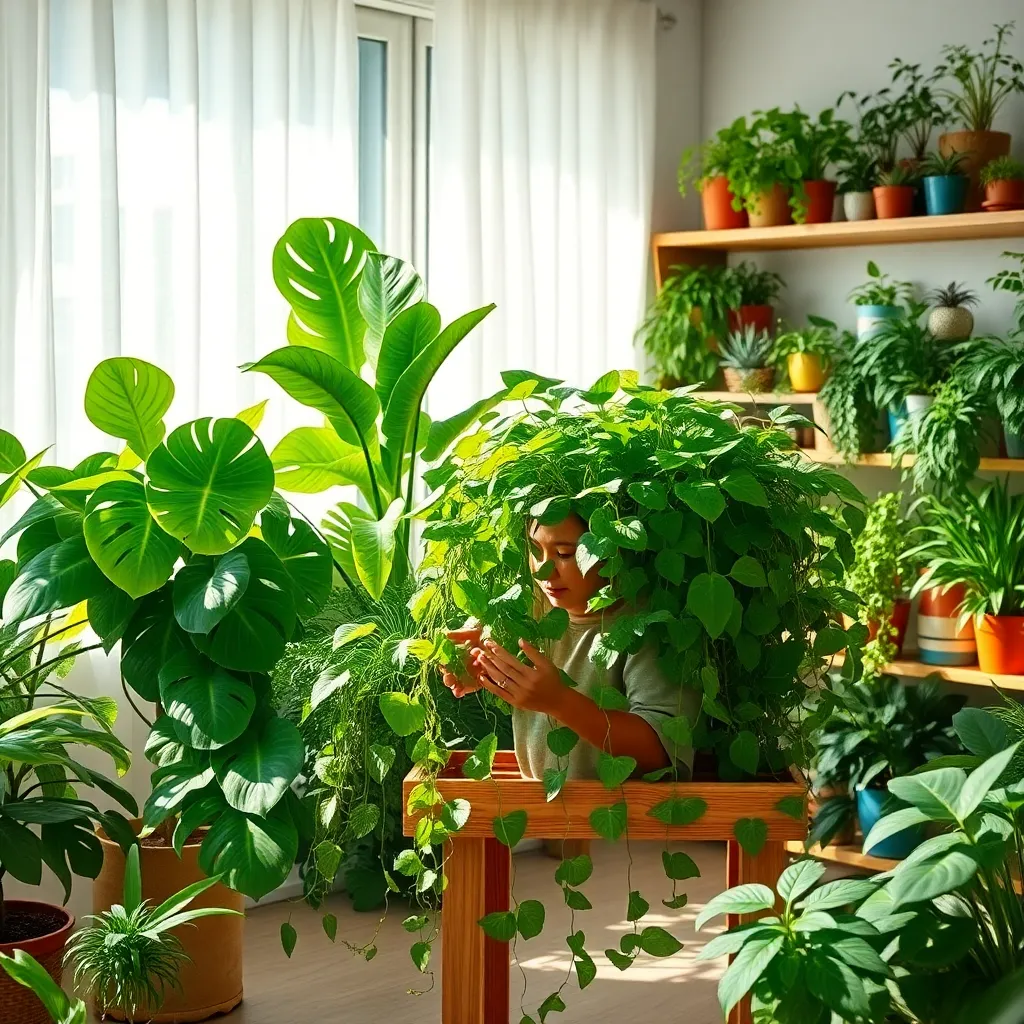
When growing indoor plants, it’s essential to rotate them regularly to ensure even growth. Most plants naturally grow towards the light, which can cause them to lean or become lopsided if not rotated.
For beginners, a simple rule of thumb is to turn your plants a quarter turn each week. This practice helps expose all sides of the plant to light, promoting balanced growth and preventing the plant from becoming top-heavy.
Consider placing a reminder on your calendar to rotate your plants at the same time each week. Advanced gardeners might also observe their plant’s growth patterns more closely and adjust the frequency of rotation based on the plant’s response to light.
In addition to rotation, ensure that plants are positioned in a spot where they receive adequate light for their specific needs. Some plants, like succulents, thrive in bright light, while others, such as ferns, prefer indirect sunlight.
Conclusion: Growing Success with These Plants
In the journey of nurturing indoor plants, we uncovered five key relationship concepts: communication through understanding plant needs, patience in watching them grow, commitment by maintaining a consistent care routine, adaptability in responding to their changing requirements, and the joy of shared growth. These principles not only apply to your leafy companions but also illuminate the path to successful human relationships.
As a next step, choose one plant to start with and dedicate time to learn its specific needs. This small action will enhance your skills and build confidence, echoing how focused attention can nurture any relationship.
Remember, growth takes time, but every moment you invest is a step toward flourishing connections. Save or bookmark this article as your go-to guide, ensuring you have these insights at your fingertips whenever you or your plants need a little extra care.
Looking forward, embrace the potential of your relationships to bloom just like your indoor garden. With patience, commitment, and adaptability, you are well-equipped to cultivate bonds that are as vibrant and enduring as the plants you tend.
